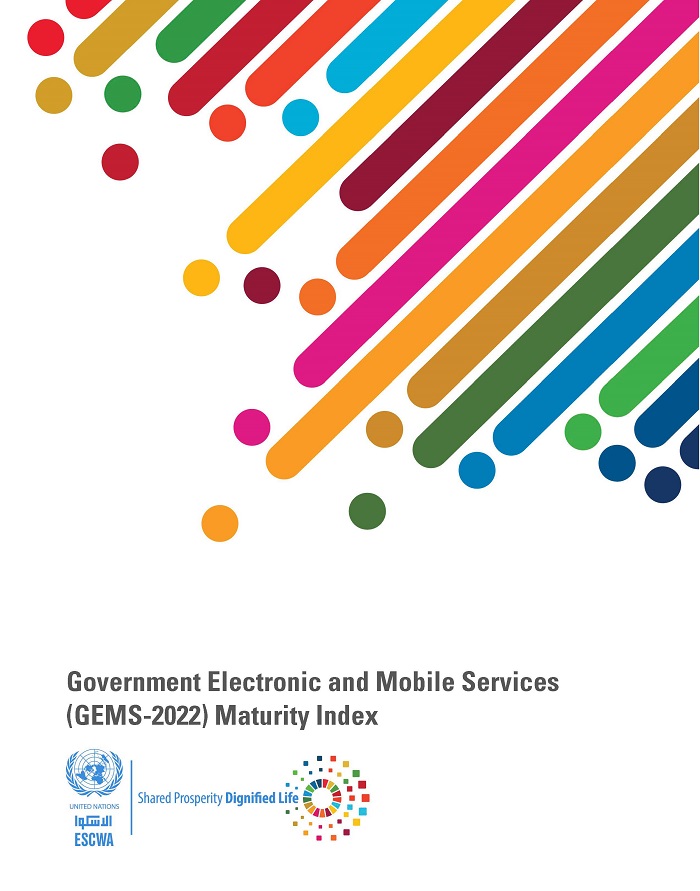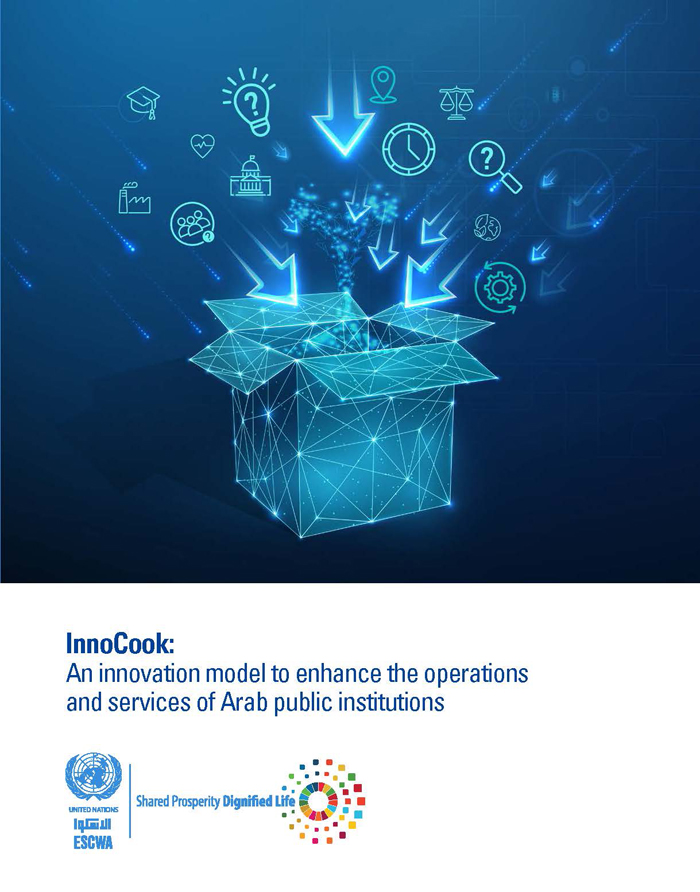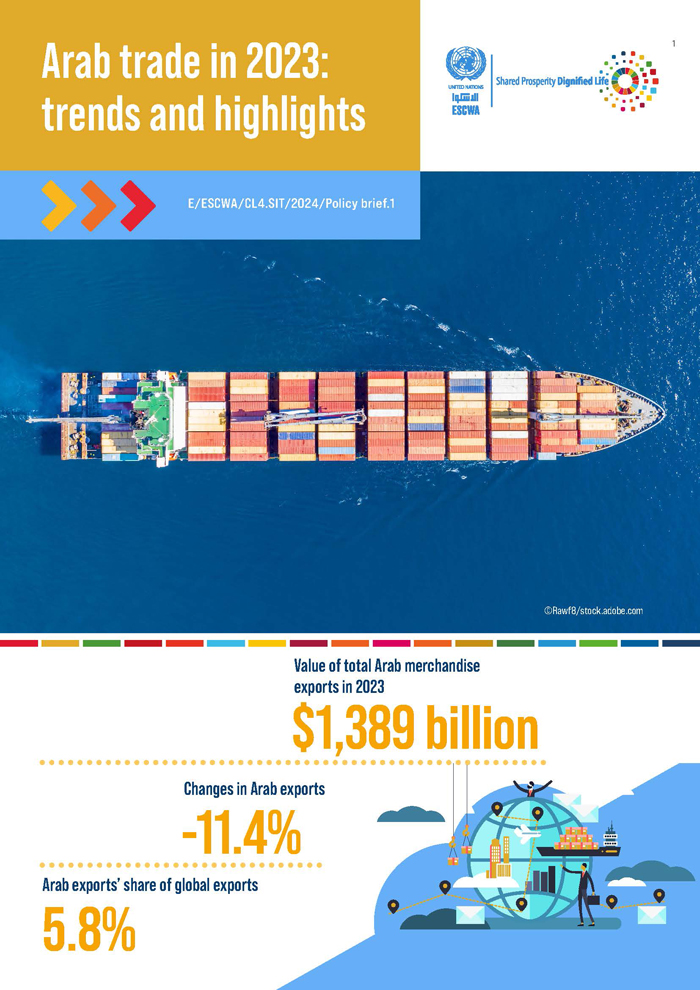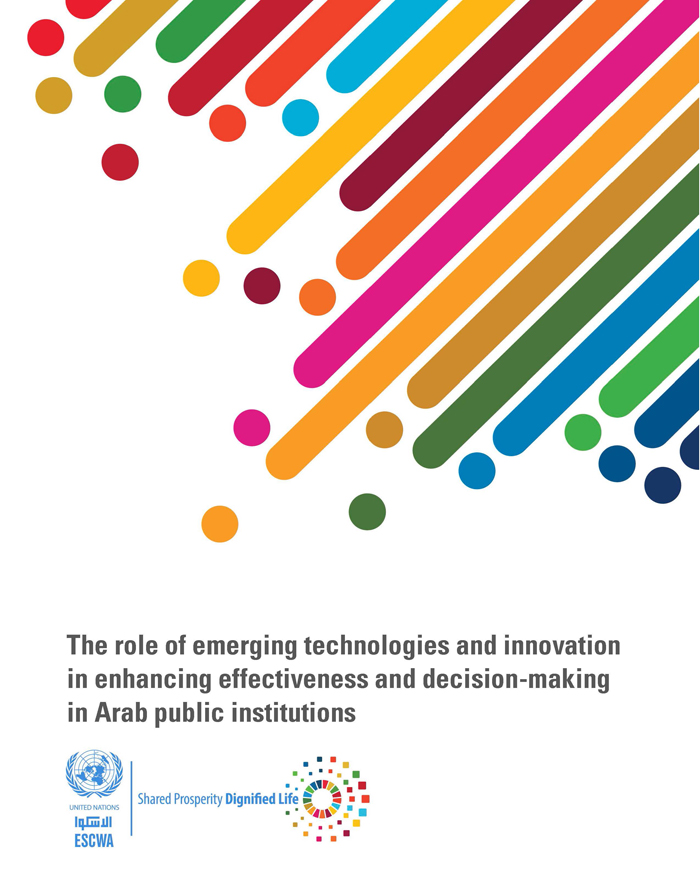
ESCWA Publication: E/ESCWA/CL4.SIT/2022/TP.4
Country: Arab region, People’s Democratic Republic of Algeria, Republic of Iraq, Hashemite Kingdom of Jordan, State of Kuwait, Lebanese Republic, State of Libya, Islamic Republic of Mauritania, Kingdom of Morocco, Sultanate of Oman, State of Palestine, State of Qatar, Kingdom of Saudi Arabia, Federal Republic of Somalia, Republic of Sudan, Syrian Arab Republic, United Arab Emirates, Republic of Yemen
Publication Type: Reports & studies
Cluster: Statistics, Information Society and Technology
Focus Area: Technology & innovation
Initiatives: Government electronic & mobile services
SDGs: Goal 9: Industry, Innovation and Infrastructure, Goal 16: Peace, Justice and Strong Institutions, Goal 17: Partnerships for the Goals
Keywords: Development, Innovations, Digital technology, E-government, Mobile telecommunication services
Government electronic and mobile services (GEMS-2022) maturity index
February 2023
GEMS indicator aims to measure the maturity of government services provided through e-portals and mobile applications in the Arab region. It is a tool that enables decision and policy makers to monitor the digital transformation programs, and it seeks to bridge the gap in most of the international indicators, related to service maturity, its use, user satisfaction, and public outreach.
To this end, 84 government services have been identified, and it is necessary for each country to deliver them electronically for individuals and businesses. The principle of life cycle has been adopted in service selection; any individual needs these services at different stages of life, and each company requires them since its establishment to its close. These services are updated annually in line with the evolving needs of individuals and institutions.
Related content
Technology & innovation
,
GEMS indicator aims to measure the maturity of government services provided through e-portals and mobile applications in the Arab region. It is a tool that enables decision and policy makers to monitor the digital transformation programs, and it seeks to bridge the gap in most of the international indicators, related to service maturity, its use, user satisfaction, and public outreach.
To this end, 84 government services have been identified, and it is necessary for each country to deliver them electronically for individuals and businesses. The principle of life cycle has been adopted in service selection; any individual needs these services at different stages of life, and each company requires them since its establishment to its close. These services are updated annually in line with the evolving needs of individuals and institutions.


